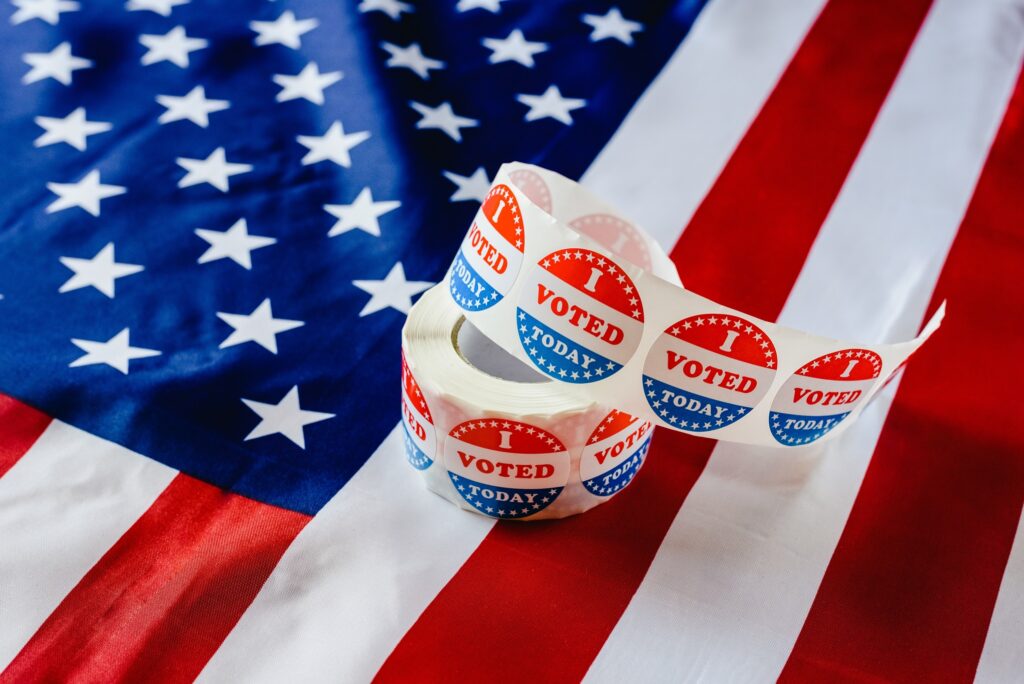The party of prison reform
Michael Hough—a second-term Republican state legislator from Frederick County, Md.—is about as conservative as blue-state legislators come. He played a prominent role in opposing the state’s new gay marriage law, holds an “A” rating from the National Rifle Association, and received a 100 percent score from the state’s business lobby.
The major focus of his legislative agenda, however, crushes any stereotypes that might come to mind, given his résumé. Hough wants to reform America’s prisons and help the more than 500,000 people who come home from correctional facilities every year.
In the past few years, he’s successfully pushed programs that offer well-behaved offenders the chance to significantly shorten their time under state supervision and that replace potentially long sentences with “swift and certain” stays in prison for failed drug tests and other slip-ups. This year, he’s working to pass mental health reforms and to create a “certificate of rehabilitation” program that allows ex-offenders to present formal evidence that they’ve mended their ways.
“As a fiscal conservative, it just made sense to me. We spend a lot on prisons,” he says. “On a human level, I know that people sometimes just get trapped in addiction.”
Hough isn’t alone. Around the country, dozens of political leaders with rock-solid conservative credentials have begun to take a new line on crime and, particularly, the issue of reintegrating ex-offenders into society. This loose movement represents a sea change in conservative thinking and, arguably, the largest social reform effort to emerge from the right in several decades.
The efforts have affected much of the country. Since 2007, conservatives have led the charge for major criminal justice reforms in Texas, Missouri, Florida, Kansas, South Carolina, Louisiana, South Dakota, and Georgia, among other states. Many conservatives have also supported efforts led by liberals in states like Michigan (under former Gov. Jennifer Granholm). “It’s at the point where we have critical mass. It’s a movement,” says Pat Nolan of Prison Fellowship Ministries. “It’s a conservative movement that focuses on being skeptical of bureaucracy and getting the most value out of the tax dollars we collect.”
While budgetary concerns have been the impetus for many of these efforts, relatively flush states like South Dakota—where Republican Gov. Dennis Daugaard signed sweeping legislation earlier this month—have embarked on reforms just as significant as fiscal basket-case California.
Judeo-Christian commandments to care for prisoners have no doubt been a significant part of the reform movement, as evidenced by the prominent role that Prison Fellowship Ministries has played in nearly all the efforts. The organization was founded by the late Charles Colson and counts a bevy of distinguished conservative pols (including Nolan, a former Republican leader in the California Legislature) among its staff and supporters. But just as much passion has emanated from libertarians and “Main Street” conservatives worried about big, wasteful, and inefficient government, many of whom have joined the Right on Crime Coalition spearheaded by the Texas Public Policy Foundation (TPPF, which also counts many religiously motivated supporters).
In many ways, the changing attitudes toward offenders reflect conservative values. Hough, Nolan, and others like them note that drug treatment can hold offenders responsible; that making ex-offenders eligible for professional licenses represents a triumph of deregulation; and that keeping parents out of jail strengthens families.
“Everything we did was rooted in true conservative values of [being] pro-family, changing offender behavior, and saving money,” says Jim Seward, who served as Daugaard’s point man on the reforms in South Dakota.
The results, in both fiscal and human terms, are impressive. After climbing more or less steadily for the better part of four decades, per-capita incarceration rates began to level off after the first major reforms were implemented in the mid-2000s. Since peaking in 2008, the prison and jail population has been declining. Importantly, the decline has done nothing to reverse the falling crime rates that we’ve seen since the mid-1990s. In fact, states that have reduced their prison populations have seen crime decline at the same or greater rates than states that haven’t. Indeed, as measured by overall crime statistics, the United States is safer today than at any time since the 1960s and also safer than any other sizable developed Western country. (Homicide rates remain higher than in other rich nations.) Reports of victimization collected in telephone polls by the Bureau of Justice Statistics show an even deeper drop in crime.
But while the new approaches—fewer prisons, more drug treatment, more alternative sentences, a focus on community monitoring, reducing the number of offenses punishable by law, and a generally more lenient attitude toward people who have served their time—may well be consistent with conservative values and principles, they are, nonetheless, a break from orthodoxy.
Much of the best research offered in support of these approaches comes from liberal organizations like the Pew Center on the States and the Urban Institute, and they stand in stark contrast to the heavily punitive tough-on-crime stances taken by Richard Nixon, Ronald Reagan, Bill Clinton, and even Joe Biden (the author of major crime-related legislation supported by both Reagan and Clinton).
So why have conservative attitudes changed?
First, and perhaps most important, the politics have changed. After serving as a major issue in every presidential election from 1960 to 1992, crime has more or less vanished from public debate. Neither Barack Obama nor Mitt Romney so much as mentioned it in his party convention address, or in any of the debates. In most of the country, politicians’ attitudes toward crime and criminals sway few votes. With elected leaders no longer fearful of the ballot box consequences of taking a superficially “soft” stance on crime (the actual policies are anything but soft), the voices of those who seek criminal justice reform have been strengthened.
Technology also plays a role. It is much easier today to treat and monitor potentially dangerous people outside of correctional institutions than it was in the past. In particular, GPS tracking devices allow police, parole, and probation officers to monitor offenders closely without actually locking them up. While relapse and recidivism rates remain high, new pharmaceuticals and other treatments have improved our ability to help those with mental illness and substance abuse problems. Restrictions have also been loosened to allow faith-based groups greater freedom to operate inside correctional facilities, giving many offenders new and effective pathways toward personal reform.
The justice system has also changed. In particular, new specialty courts—most prominently “drug courts”—have encouraged judges, prosecutors, defense attorneys, and social workers to work together to help offenders mend their ways rather than simply locking them up. The approach, pioneered in the late 1980s, has spread to almost all sizable jurisdictions in the United States and has shown some promise to deal with a variety of thorny issues, including mental health and domestic abuse.
Other trends that are more difficult to measure also play a role. Recent years have seen tremendous growth in the number of African-Americans employed as law enforcement officers and police chiefs. This has coincided both with a significant drop in crime rates among African-Americans and with a general easing of “oppositional” tensions that led police forces to be viewed (sometimes correctly) as racist organizations in some black communities.
Just as importantly, however, conservatives have simply decided to change with the times.
“We don’t say conservatives were wrong in the 1980s and 1990s when they said ‘We need more prisons,'” explains Marc Levin, who heads the Right on Crime Coalition for TPPF. “But as we expanded incarceration, we’ve swept in a lot of low-risk offenders and spent a lot of money.”
Nor is the new thinking a total reversal. Conservatives may work to end the criminalization of matters that should be left to regulators and the civil courts, like laws against taking oysters from unapproved beds or missing deadlines to file environmental paperwork. But longtime left-wing causes like decriminalizing possession of hard drugs and legalizing prostitution have gained adherents only among hardcore libertarians. Although they’re generally popular when conservative prison reformers talk amongst themselves, there have likewise been few public efforts to ease superficially “tough” policies that deny early release to the seriously ill and make it almost impossible for convicts to qualify for college financial aid. Even marijuana legalization efforts, which have some support among conservatives, have been disconnected from the broader movement toward prison reform. And notably, while U.S. incarceration rates are dropping, they remain the highest in the developed world.
Still, the changes in prison policy—and particularly the new emphasis on prisoner reentry—represent a significant evolution of the conservative movement. Times have changed, crime has changed, and conservatism has changed, too.
Eli Lehrer is president of R Street.






